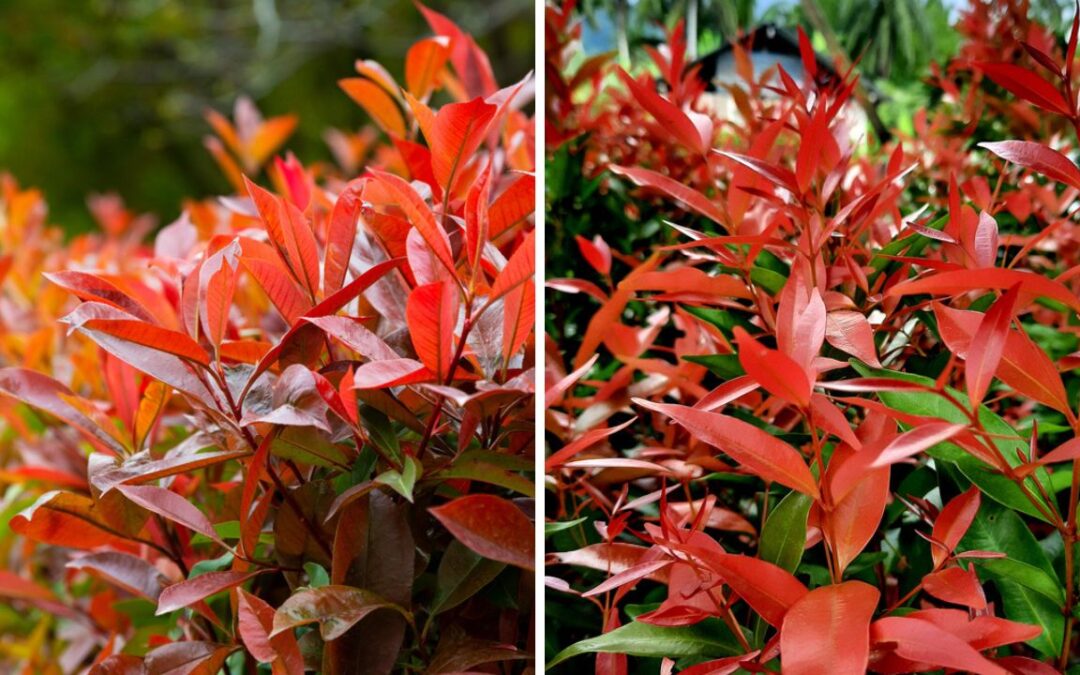
by Matthew Kemble | Oct 26, 2023 | News
In the intricate world of gardening, choosing the right plant can be both an art and a science. Among the myriad of choices, two standout contenders often captivate the attention of horticulturists and enthusiasts alike: Photinia Red Robin and Photinia Carre Rouge. As we delve into “Photinia Red Robin VS Photinia Carre Rouge: An In-depth Comparison,” we aim to provide a comprehensive analysis, shedding light on their unique attributes and differences. Whether you’re an expert botanist, a landscape architect, or simply an individual with a penchant for vibrant foliage, this comparison promises to offer valuable insights for your next gardening endeavor. Let’s embark on this enlightening exploration together.
Historical Background and Origin of Photinia Red Robin and Photinia Carre Rouge
The annals of gardening are replete with tales of plants that have woven themselves into the very fabric of our landscapes, and the Photinia family stands as a testament to this enduring legacy. For generations, these leafy wonders have held a cherished spot, adorning gardens with their vibrant charm. Yet, in recent times, the limelight has been particularly kind to two standout members: Photinia Red Robin and Photinia Carre Rouge.
Photinia Red Robin
Envision a classic painting that never fades with time; that’s Photinia Red Robin for you. With a history that spans several decades, this botanical gem has seen countless sunrises and sunsets, its striking red leaves dancing in the changing seasons. It’s this timeless allure, combined with its adaptability, that has endeared it to green thumbs everywhere, from the eager beginner planting their first shrub to the master gardener with soil-touched hands and years of wisdom.
Photinia Carre Rouge
Picture a starlet making a grand debut on the red carpet, turning heads and stealing the show. That’s the essence of Photinia Carre Rouge. Though it joined the garden scene more recently, its impact has been nothing short of sensational. With leaves that boast a profound shade of red and a growth pattern that’s compact yet commanding, it’s sparked passionate discussions and debates. The question on many lips: “Photinia carré rouge ou red robin?” As the intrigue around this plant grows, so does its legion of admirers.
| Attribute |
Photinia Red Robin |
Photinia Carre Rouge |
| Family Lineage |
Part of the long-standing Photinia family. |
A newer member of the Photinia family. |
| Historical Presence |
Has graced gardens for several decades. |
A more recent addition, yet impactful in its presence. |
| Primary Characteristics |
Known for its enduring red leaves and versatility in gardens. |
Recognized for its profound red hue and compact growth structure. |
| Popularity Over Time |
Consistently a favorite due to its timeless appeal. |
Rapidly gained attention, sparking debates like “photinia carré rouge ou red robin”. |
| Symbolism |
Represents timeless beauty and adaptability in landscaping. |
Symbolizes novelty, vibrancy, and modern gardening aesthetics. |
Together, these two plants represent a blend of time-honored tradition and refreshing novelty, each bringing its unique charisma to gardens worldwide. The dance of their leaves, swaying in harmony with nature’s rhythm, invites us all to stop, admire, and lose ourselves in their botanical ballet.
Key Characteristics of Photinia Red Robin
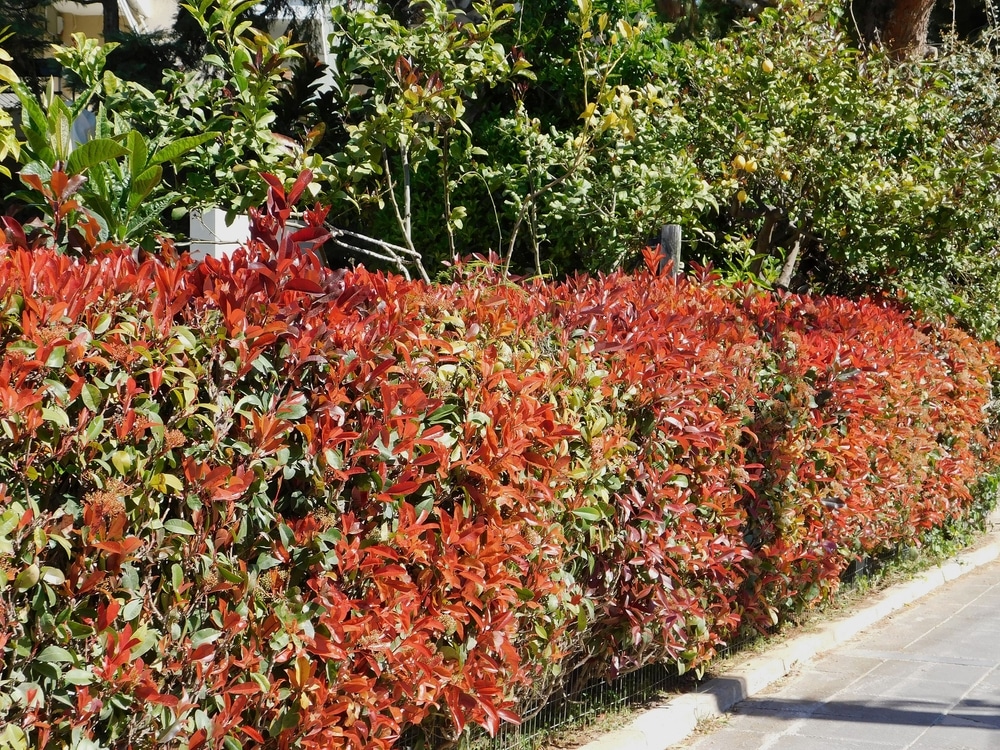
-
Physical Appearance and Growth Pattern
Picture a towering tree, standing proud and tall in the midst of a garden. That’s the essence of Photinia Red Robin. Growing to remarkable heights of 10-15 feet, it offers a lush, green canopy. Perfect for those seeking a touch of nature’s privacy, it provides a serene retreat right in your backyard.
The real magic of Photinia Red Robin lies in its leaves. Starting with a radiant red, they gracefully transition to a rich green as time passes. This ever-changing display of colors is a constant topic of discussion, especially when comparing photinia carre rouge vs red robin.
-
Flowering and Fruiting Habits
As the warmer months approach, Red Robin adorns itself with clusters of pristine white flowers. These blooms eventually give way to shiny red berries, attracting a variety of birds and adding to the lively “photinia red robin vs carre rouge” garden conversations.
Some plants require precise conditions to thrive, but Red Robin is notably adaptable. Whether placed under the bright sun or in partially shaded areas, it flourishes. And though it has a preference for well-draining soils, it’s accommodating to various ground types, making the “photinia carré rouge vs red robin” and “photinia carré rouge ou red robin” debates even more intriguing.
Red Robin’s versatility is truly commendable. Whether you’re planning a boundary of thick greenery or desire a standout centerpiece in your garden, it fits the bill. Discussions like “red robin carre rouge” often highlight its numerous gardening applications, proving its widespread appeal.
Key Characteristics of Photinia Carre Rouge
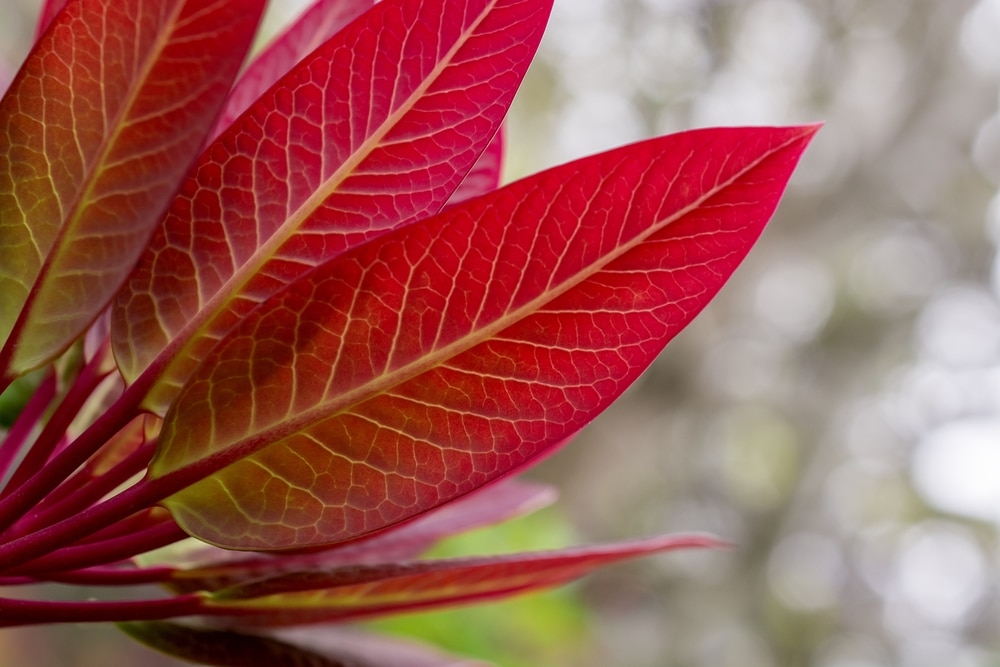
At first glance, the Photinia Carre Rouge might seem like your typical shrub. But spend some time with it, and you’ll quickly realize there’s more than meets the eye. This bushy beauty doesn’t stretch endlessly towards the skies but rather maintains a moderate height, usually settling between 8-12 feet. Its compact nature makes it a favorite for those looking for garden aesthetics without overwhelming space. Remember the “red robin carre rouge” comparison? Well, it’s this balanced growth that often draws the parallel.
Every plant has its signature, and for the Photinia Carre Rouge, it’s undoubtedly its leaves. Imagine the richest shade of red you can think of. Now, paint a leaf with that color, and voila! You’ve got the Carre Rouge leaf. What’s even more impressive is how long these leaves retain their color. For gardeners who love a consistent color display, this feature of the “photinia carre rouge” is a massive plus.
As if its stunning foliage wasn’t enough, come mid-spring, and Carre Rouge decides to throw a floral party. Adorning itself with clusters of pristine white flowers, it creates a visual spectacle against its dark-red backdrop. These flowers aren’t just a treat for the eyes; they’re a magnet for bees, butterflies, and other pollinators, bringing a buzz of life to your garden.
As the cold retreats and spring steps forward, the Photinia Carre Rouge dresses in its best attire. Adorning itself with clusters of delicate white flowers, it offers a visual treat that contrasts brilliantly with its dark leaves. And it’s not just a feast for the eyes; these blossoms attract bees, butterflies, and other pollinators, turning your garden into a lively hub of activity.
Some plants are like those high-maintenance friends we all have, but not the Photinia Carre Rouge. It’s undemanding and versatile. While it has a soft spot for places bathed in sunlight, it doesn’t shy away from partly shaded spots either. Soil-wise, its preference leans towards the well-draining kind, but it’s adaptable enough to cozy up to a range of soil conditions. This flexibility makes the “photinia carre rouge” a favorite among both novice gardeners and seasoned green thumbs.
The compact growth of the Photinia Carre Rouge is both its charm and its strength. This trait makes it a sought-after choice for various landscaping needs. Be it defining the edges of your garden with a lush border, creating a focal point with a decorative patch, or even adding layers to a multi-tiered garden design, this plant rises to the occasion, every single time.
Photinia Red Robin VS Photinia Carre Rouge: The Main Differences
The “Photinia Red Robin VS Photinia Carre Rouge” debate is one that has been whispered among gardening circles for quite some time. Both these plants, hailing from the illustrious Photinia family, have left an indelible mark on gardens worldwide. Their striking similarities often lead to confusion, but as any seasoned gardener will tell you, it’s their differences that truly matter. As we delve deeper into this topic, we aim to provide clarity, ensuring you make an informed decision tailored to your gardening aspirations.
A Detailed Look at the Differences
| Characteristic |
Photinia Red Robin |
Photinia Carre Rouge |
| Size & Growth |
Grows with a majestic presence, often reaching 10-15 feet. |
More compact, giving it a bushier appearance, and maxing out at about 12 feet. |
| Foliage |
A spectacle of color transformation, from vibrant red to mature green. |
Deep red leaves are its signature, offering consistency in garden color schemes. |
| Flower Appearance |
White flowers make a springtime debut, adding to its appeal. |
Mid-spring is when it showcases its white blossoms, creating a visual treat. |
| Preferred Conditions |
Flexible in its needs but has a soft spot for well-draining soils. |
Sun-lovers rejoice! Carre Rouge thrives in sunny spots and is not too picky about soil. |
| Landscaping Uses |
Standalone or as part of a tall hedge, it’s a versatile choice. |
Given its compact growth, it’s a top pick for garden borders and decorative areas. |
| Maintenance & Care |
Requires regular pruning to maintain its shape and health. |
Being bushier, it might need more frequent trims to keep it looking its best. |
| Pest & Disease Resistance |
Generally robust but watch out for common pests like aphids. |
Shows resilience but like its counterpart, it’s best to be vigilant about pests. |
Caring for Your Photinia: Tips and Tricks

Whether you’re a seasoned gardener or a newbie looking to understand the intricacies of Photinia care, this guide aims to shed light on the dos and don’ts, ensuring your garden remains the envy of the neighborhood.
Watering
Water is the lifeblood of any plant, and Photinias are no exception. Whether it’s the Red Robin or the Carre Rouge, the trick lies in the balance. These plants prefer deep and infrequent watering. The goal is to ensure the soil remains moist, but not so wet that it feels like a soggy sponge. Overwatering can lead to root rot, while underwatering might stunt their growth. So, the next time you’re out with a watering can or hose, remember: it’s all about moderation.
Pruning
Pruning is like giving your Photinia a refreshing haircut. It not only keeps the plant looking neat but also encourages new growth. The Red Robin, being a hardy fellow, can handle a more aggressive trim. So, if you’re looking to shape it or control its size, don’t hold back too much. On the other hand, the Carre Rouge, with its more delicate demeanor, appreciates a gentler approach. A light trim, especially during its growing season, will keep it looking its best.
Fertilization
Think of fertilization as a spa day for your Photinia. A balanced fertilizer, especially during the spring, gives them the nutrients they need to stay vibrant and lush. While they aren’t overly fussy about the type of fertilizer, it’s a good idea to stick to a well-balanced one. This ensures they get a mix of all the essential nutrients, paving the way for healthier growth.
Pests and Diseases
The bane of any gardener’s existence. Both the Red Robin and Carre Rouge, in their journey, might encounter a few uninvited guests like aphids or face issues like leaf spots. The key is regular checks. Think of it as a routine health check-up. If you spot any issues, prompt treatment is crucial. Whether it’s a natural remedy or a store-bought solution, acting quickly can save you a lot of headaches down the road.
| Care Aspect |
Photinia Red Robin |
Photinia Carre Rouge |
| Watering |
Deep, infrequent watering. Moist, not soggy. |
Deep, infrequent watering. Moist, not waterlogged. |
| Pruning |
Can handle aggressive trims. |
Prefers gentle trims. |
| Fertilization |
Balanced fertilizer in spring. |
Balanced fertilizer in spring. |
| Pests & Diseases |
Watch for leaf spots & aphids. |
Regular checks for aphids & treat leaf spots. |
Conclusion: Deciding Between Carre Rouge and Red Robin for Your Garden
When it comes down to picking between Carre Rouge and Red Robin, it’s like choosing between two amazing desserts – you can’t really go wrong! If you’re someone who loves a plant that grows tall and offers a beautiful color show as its leaves change from bright red to green, then Red Robin might just be your pick. On the flip side, if you’re drawn to a plant that keeps its deep red shade consistently and doesn’t grow too tall, giving a bushy feel to your garden, then Carre Rouge is calling your name. Take a moment to picture each in your garden space, consider the look you’re going for, and trust your instincts. Both are fantastic choices, and your garden will thank you!
Frequently Asked Questions
1. What makes Photinia Red Robin stand out in a garden?
Photinia Red Robin is a showstopper with its leaves that dazzle in a bright red when young, slowly maturing to a rich green. Its tall stature and the visual treat of color-changing foliage make it a favorite among many garden enthusiasts.
2. I’ve heard a lot about Carre Rouge’s consistent color. Is it true?
Absolutely! Photinia Carre Rouge is known for its deep red leaves that stay true to their hue for a long time. If you’re someone who loves a steady splash of color in your garden without much change, Carre Rouge is your go-to.
3. Are both these plants high maintenance?
Not really! Both Red Robin and Carre Rouge are pretty adaptable. While they appreciate some love in the form of regular watering, pruning, and occasional fertilization, they’re not overly demanding. A little care goes a long way with these beauties.
4. Which one is better for smaller gardens or limited spaces?
If space is a constraint, Photinia Carre Rouge, with its compact and bushier growth, would be a more fitting choice. It allows you to have the beauty of Photinia without overwhelming a smaller garden.
5. Can I grow both Photinia Red Robin and Carre Rouge together in my garden?
Of course! Both plants can coexist beautifully in a garden, complementing each other. The transitional foliage of Red Robin paired with the consistent hue of Carre Rouge can create a captivating visual contrast.
6. Do they attract any pests or diseases I should be wary of?
Like many plants, they can occasionally be visited by pests like aphids or face issues like leaf spots. Regular checks and timely interventions can keep these concerns at bay.
7. Are they suitable for different climates?
Both Red Robin and Carre Rouge are fairly adaptable. However, it’s always a good idea to check their suitability for extreme climates. Generally, they thrive in mild to temperate zones.
There you have it—a comprehensive dive into “Photinia Red Robin VS Photinia Carre Rouge”. Regardless of your pick, your garden will thank you for it! Ready to plant? Happy gardening!

by Matthew Kemble | Oct 17, 2023 | News
As autumn rolls in with a cool breeze, Readyhedge is excited to introduce our new range of hedge lines. These have been carefully grown to add a touch of autumn’s calm beauty to your garden. As leaves change from summer green to autumn colours, our new hedge lines are here to bring this seasonal change right to your garden, offering a calm and fresh look.
Why Choose Autumn Hedges
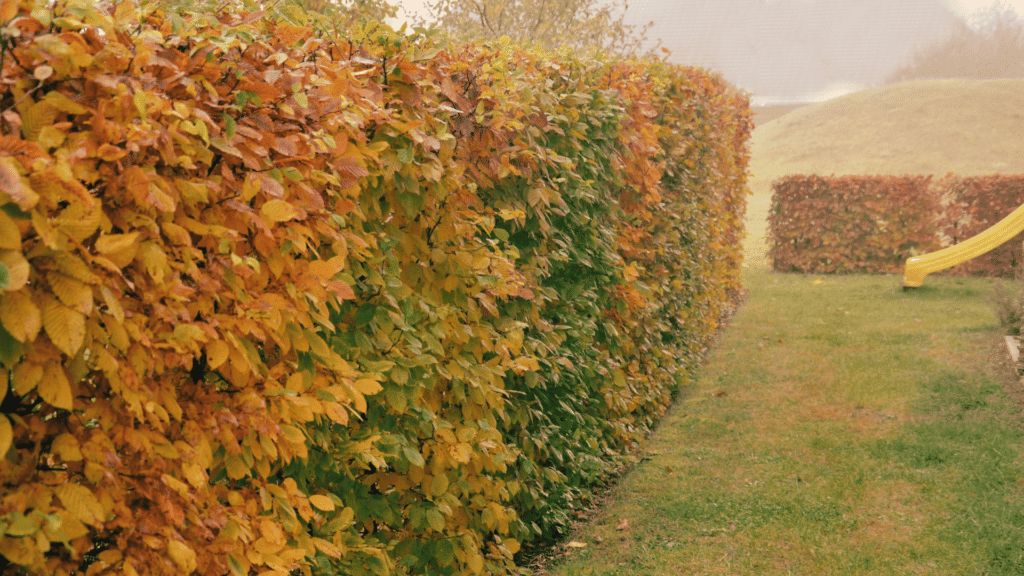
Autumn is a brilliant time of year to capitalise on some new hedging. They not only make gardens look good but also help nature thrive. Here are some great reasons to choose autumn hedges for your garden:
Beautiful Colours
Autumn brings a lovely change of colours in leaves. As it gets cooler, autumn hedges like Beech and Portuguese Laurel show off colours from golden yellows to bright reds. This natural colour change makes your garden a beautiful place to enjoy the season. The mix of autumn colours with green plants is a lovely sight.
Home for Wildlife
Autumn hedges give birds, small animals, and insects a place to live. Some hedges have berries and seeds which help feed wildlife during colder months. By having autumn hedges, your garden becomes a small wildlife-friendly place.
Privacy and Shelter
Many autumn hedges are thick and tall, making them good for privacy. They also help block cold autumn winds, making your garden a cosy place. For example, a well-kept Beech hedge can slow down the wind, keeping your outdoor space more comfortable.
Helps the Soil
Autumn hedges have strong roots that hold the soil together. This helps prevent soil from washing away in the rain, especially on slopes or in areas where water runs off easily.
Easy to Take Care Of
Once they’re growing well, autumn hedges are easy to look after. They don’t need a lot of cutting back, and they are strong against common garden problems like pests and diseases. This makes autumn hedges a good choice for both new and experienced gardeners. The Portuguese Laurel, for example, is known for being hardy and easy to care for.
A Good Investment
Choosing autumn hedges is a long-term way to make your garden and property better. Over time, well-kept hedges grow and change, showing off seasonal beauty year after year. Plus, the added privacy and beauty could increase your property’s value.
Spotlight: Portuguese Laurel
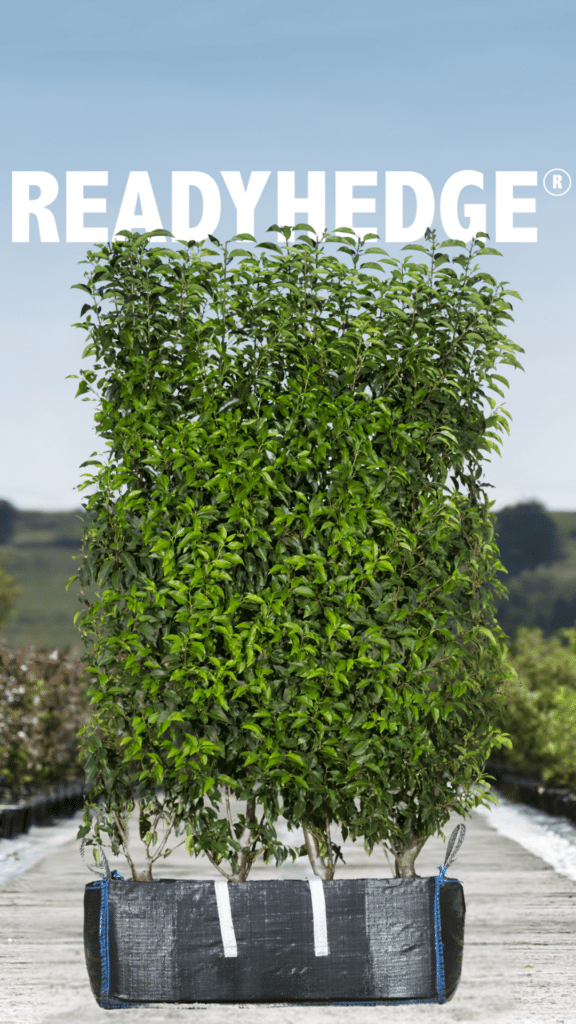
Portuguese Laurel, or Prunus lusitanica Angustifolia, is a distinguished choice for gardeners seeking to add a touch of elegance along with practical benefits to their gardens. Here’s an in-depth look into the characteristics and benefits of choosing Portuguese Laurel for your hedges:
Robust Nature
Portuguese Laurel is revered for its robust nature which makes it a resilient choice for various soil types and weather conditions. Its ability to thrive in shallow chalk soils makes it a reliable option where other hedge varieties might struggle. Moreover, its cold resistance further augments its suitability for the UK’s varied climate, making it a superior substitute for Sweet Bay (Laurus nobilis).
Ease of Maintenance
One of the notable traits of Portuguese Laurel is its low maintenance requirement. It responds well to regular trimming, which not only keeps it in shape but also promotes denser growth. This characteristic makes it a suitable choice for both novice gardeners and seasoned horticulturists looking for less maintenance-intensive hedges.
Formal and Smart Appearance
Portuguese Laurel can be trimmed to achieve a very formal and smart hedge. Its small, dark green leaves held on reddish stems that mature over time, present a polished look that never fails to impress. Whether you prefer a neat, geometric appearance or a more natural look, Portuguese Laurel is versatile enough to meet various aesthetic preferences.
Versatile Trimming Options
The flexibility in trimming allows Portuguese Laurel to be shaped into different forms. When clipped regularly, it can produce a tight, dense hedge comparable to the revered English Yew (Taxus baccata). Moreover, it can be creatively clipped into balls and lollipops, adding a whimsical or formal touch to your garden landscape.
Flowering and Fruiting
If left untrimmed, Portuguese Laurel produces white candle-like flowers in late spring, followed by small black berries, adding a seasonal charm. However, with regular trimming, flowering and fruiting can be controlled as per your preference.
An Ideal Substitute
Portuguese Laurel serves as a great alternative to other laurels, especially in cold-prone areas. It’s similar in appearance to Sweet Bay but exhibits better cold resistance, making it a more reliable choice.
Height and Structure
When allowed to grow untrimmed, Portuguese Laurel naturally forms a dense cone, reaching up to about 5 metres in height. This can provide substantial privacy and windbreak benefits while adding a structural element to the garden design.
Readyhedge Offerings
Readyhedge provides high-quality Portuguese Laurel hedges, available in Readybag or trough formats for ease of planting and instant effect. Their expertly grown Portuguese Laurel hedges are a testament to over 20 years of horticultural excellence, ensuring you receive a top-tier product that will thrive in your garden for years to come.
The Portuguese Laurel from Readyhedge is competitively priced at £220.00 per metre ex. VAT for a Readybag, ensuring you get the best value for your investment. For more details or to make a purchase, you can reach out to Readyhedge at 01386 750 585 or visit their nursery at Court Gate Nursery, Eckington, WR10 3BB.
Spotlight: Green Beech
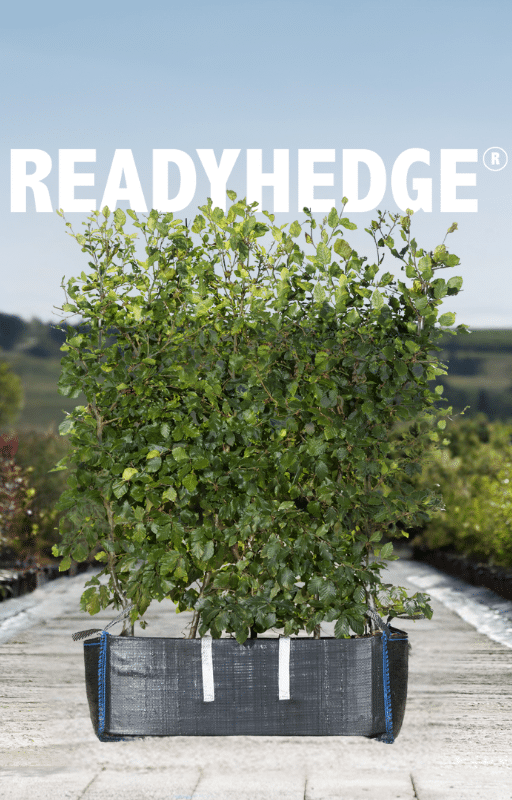
Fagus sylvatica, commonly known as Green Beech, is a timeless choice for hedging, promising a vibrant display of changing hues all year round. Here’s an exploration of the myriad benefits and characteristics of Green Beech, making it a standout choice for your garden or landscape project:
Seasonal Beauty
Green Beech is celebrated for its seasonal transitions. In spring, it unveils fresh green leaves which transition into a rich coppery shade during autumn and winter. This constant change adds a dynamic visual interest to any planting scheme or boundary, making every season a picturesque scene in your garden.
Historical Significance
The use of Green Beech for hedging is steeped in history, finding its place in many formal gardens and landscapes over centuries. Its classic appeal has been cherished in the UK, epitomized by the Meikleour Beech Hedge in Scotland, the tallest beech hedge on earth according to Guinness World Records, standing at 30 metres tall and 530 metres long since 1745.
Award-Winning Plant
The Royal Horticultural Society bestowed an Award of Garden Merit upon Green Beech in 1984, further underlining its outstanding qualities as a hedging plant.
Impressive and Compact Hedge
With regular clipping, Green Beech forms a compact and impressive hedge, adaptable to various heights starting as low as 4 feet. Its flexibility in height and form caters to different aesthetic and functional needs, making it a versatile choice for different garden styles and purposes.
Unique Leaf Retention
Unlike many deciduous trees, Green Beech retains its burnished copper leaves during winter, providing a semblance of privacy and a visual barrier even in colder months. This unique leaf retention keeps your hedge looking full and vibrant year-round.
Soil Adaptability
Green Beech is adaptable to a wide range of soil types except for heavy clay and very wet soils. It has a particular affinity for chalky soils and shallow soils over limestone, making it a robust choice for diverse garden settings.
Readyhedge Offerings
Readyhedge provides meticulously grown Green Beech hedges, available in Readybag for £190.00 ex. VAT. This option ensures ease of planting and an instant visual impact. Their Green Beech hedges are nurtured to thrive and adapt to various garden conditions, ensuring a long-term, quality investment for your landscape.
Readyhedge’s dedicated team is available for consultations and purchases at 01386 750 585 or Court Gate Nursery, Eckington, WR10 3BB. Explore their offerings to find the perfect Green Beech hedge that aligns with your gardening aspirations.
The Readyhedge Quality Assurance: Nurturing Excellence in Every Leaf

At Readyhedge, our legacy is deeply rooted in the unwavering commitment to delivering horticultural excellence embodied in our vast collection of superior-quality hedges. Our journey, driven by a profound passion for horticulture, has sculpted us into esteemed growers and suppliers of instant hedging and screening solutions that stand as a hallmark of quality and aesthetic charm.
Nestled in the serene landscapes of Worcestershire, our nursery is a sanctuary where the science and art of horticulture converge, fostering the growth of over 35 diverse varieties of hedges. Annually, our cultivated landscapes yield over 40km of robust, vibrant hedges, each meticulously nurtured to meet the discerning standards of both domestic and commercial landscapes.
A Symphony of Variety: Discover Readyhedge’s Extensive Collection
At the heart of Readyhedge’s offerings is a rich tapestry of hedge varieties, each bearing unique attributes poised to cater to the varied aesthetic and functional preferences of our clientele. Our speciality lies in cultivating instant hedging available in Readyhedge bags or troughs, offering a spectrum of heights ranging from a modest 30cm to an imposing 200cm. The breadth of our collection is a testament to our expertise, ensuring every garden finds its perfect companion in a Readyhedge.
Our meticulous cultivation process is tailored to meet the unique needs of each hedge variety, ensuring they thrive and mature into resilient, eye-catching horticultural marvels. Whether you are in pursuit of low or high panels, individual plants, or screens, our nursery is a treasure trove waiting to be explored.
The Readyhedge Customer-Centric Approach: Where Quality Meets Convenience
Our ethos transcends the boundaries of mere commerce, embodying a holistic approach that prioritizes the satisfaction and convenience of our customers. We take immense pride in ensuring a seamless acquisition experience, offering expedited delivery services that span across England, Wales, and Scotland. Our hedges, securely nestled in their one-metre trough or bag, arrive at your doorstep ready to grace your garden with their natural elegance.
Moreover, our dedicated customer service team is always on standby, ready to assist you in your quest for the perfect hedge. Your inquiries and purchases are handled with utmost professionalism, ensuring your Readyhedge experience is as enriching as the horticultural treasures we offer.
Bridging Gardens with Horticultural Mastery
Our endeavours have not only garnered us a loyal clientele but also caught the eye of prestigious platforms, earning us a feature on ITV’s ‘Love Your Weekend’ with Alan Titchmarsh. This accolade is a heartwarming affirmation of our dedication to promoting horticultural excellence.
Embark on a horticultural voyage through Readyhedge’s extensive hedge collection, each hedge a narrative of our expertise, commitment, and the boundless beauty of nature. As you explore, you’ll uncover not just a hedge, but a lifetime companion for your garden, promising seasons of visual delight and ecological balance.
Conclusion
Autumn is a special time at Readyhedge. We are introducing new hedge varieties like the Portuguese Laurel and Green Beech to help make your garden a peaceful and beautiful place. Our wide range of hedges is carefully chosen to suit different gardens and tastes.
Our new autumn hedges are easy to care for and add beauty to your garden through the changing seasons. Each hedge plant from Readyhedge is a quality plant that will grow well, look great, and help create a natural outdoor space for you to enjoy.
Get in Touch to Learn More
We’re here to help you find the perfect hedge for your garden. Contact us to learn more about our new autumn hedges and other plants. Our team at Readyhedge is always ready to answer your questions and help you choose the right hedges for your garden.
- Phone: Call us at 01386 750 585 for help and advice.
- Visit: Come see us at Court Gate Nursery, Eckington, WR10 3BB to explore our hedges in person.
- Email: You can email us at info@readyhedge.com for more information.
Readyhedge is your go-to place for quality hedges. Whether you’re new to gardening or have a green thumb, we’re here to help make your garden a place you love.
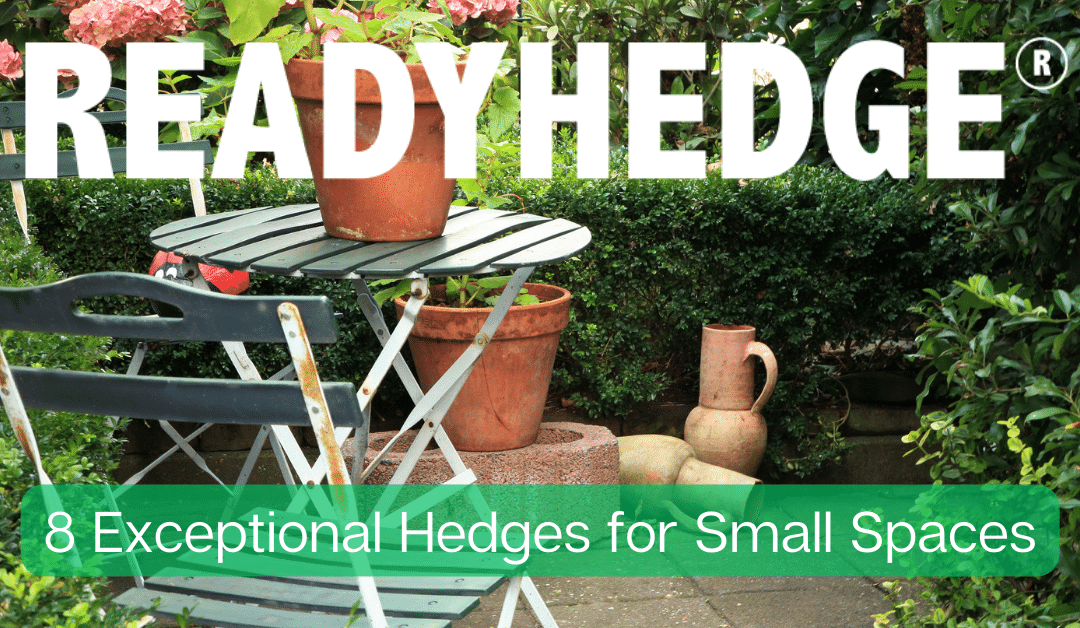
by Matthew Kemble | Jul 24, 2023 | News
Understanding the Importance of Hedges in Small Spaces
Hedges are a fantastic way to add structure, privacy, and beauty to your garden. But when you’re working with a small space, choosing the right hedge becomes even more critical. The best narrow hedge plants in the UK are those that can thrive in limited space, provide the aesthetics you desire, and require a level of care that you’re comfortable with. In this post, we’ll explore the top 10 hedging plants that are perfect for small spaces.
Top 8 Hedges for Small Spaces
-
- Common Box (Buxus sempervirens): Box is a classic choice for hedges, known for its dense, compact growth and small, glossy leaves. It’s an evergreen, providing year-round privacy and greenery. Hardy and adaptable, boxwood can be pruned into a variety of shapes and sizes, making it a versatile choice for any garden. It’s also resistant to most pests and diseases. Boxwood is perfect for formal gardens or creating defined spaces.

- Privet (Ligustrum): Privet is a fast-growing hedge, ideal for those who want to create privacy quickly. It’s semi-evergreen, retaining its leaves in all but the harshest winters. Privet produces clusters of fragrant white flowers in the summer, followed by black berries, providing seasonal interest and attracting wildlife. It’s also tolerant of urban pollution and a variety of soil conditions, making it a practical choice for city gardens.
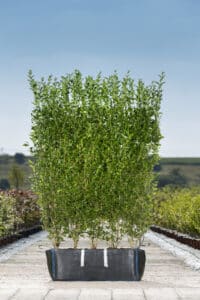
- Holly (Ilex): Holly is a great choice for adding colour to your garden. Its glossy green leaves and bright red berries provide a beautiful contrast and a festive touch in the winter. Holly is evergreen, providing year-round privacy. It’s also very hardy, resistant to pests and diseases, and can tolerate a variety of soil conditions. Holly hedges can also serve as a protective barrier due to their prickly leaves.
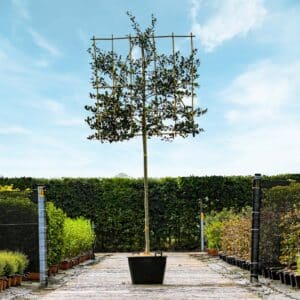
- Yew (Taxus baccata): Yew is a slow-growing, long-lived hedge that’s perfect for formal gardens. It’s an evergreen with dark green needles and red berries, providing year-round interest. Yew can be pruned into a variety of shapes and sizes, and it’s tolerant of shade, making it a versatile choice. It’s also resistant to most pests and diseases. However, note that all parts of the yew are toxic if ingested.
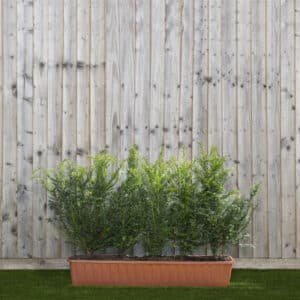
- Beech (Fagus sylvatica): Despite their potential for large growth, Beech hedges can be a wonderful addition to smaller spaces when properly maintained. Their hardiness and adaptability to a variety of soil types make them an excellent choice for urban gardens with diverse soil conditions. The leaves, which turn a captivating golden brown in the autumn and often remain on the hedge throughout the winter, provide year-round privacy even in compact spaces.This feature can be particularly beneficial in smaller gardens where privacy might be a concern. Furthermore, their resistance to most pests and diseases makes them a low-maintenance option, ideal for small-space gardeners who need to maximise their time and resources. With regular pruning to control their size, Beech hedges can offer a blend of beauty, privacy, and resilience in any small garden.
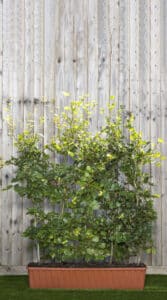
- Hornbeam (Carpinus betulus): Hornbeam is similar to beech but is better suited to wetter soils. It’s an excellent choice for creating a tall, dense hedge. Hornbeam’s leaves turn a beautiful golden yellow in the autumn, providing seasonal interest. It’s also very hardy and resistant to most pests and diseases. Hornbeam can tolerate a variety of conditions, including urban pollution, making it a practical choice for city gardens.

- Laurel (Prunus lus. Angustifolia): Laurel is a large, evergreen shrub, perfect for creating a dense, tall hedge. Its glossy green leaves and clusters of fragrant white flowers provide year-round interest. Laurel is very hardy and can tolerate a variety of soil conditions, including heavy clay. It’s also resistant to most pests and diseases. Laurel can grow quite large, so it’s best suited to larger gardens.

- Hawthorn (Crataegus monogyna): Hawthorn is a native British hedge that’s perfect for attracting wildlife. Its beautiful white flowers bloom in the spring, followed by red berries in the autumn, providing seasonal interest. Hawthorn is very hardy and can tolerate a variety of soil conditions. It’s also resistant to most pests and diseases. Hawthorn hedges can serve as a protective barrier due to their thorny branches.
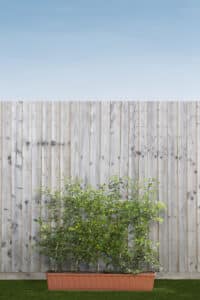
Remember, the best hedge for your garden depends on your specific needs and conditions. Consider factors like the amount of sunlight your garden gets, the type of soil you have, and how much maintenance you’re willing to do when choosing a hedge.
Caring for Your Small Hedge Plants
Watering: All plants need water to survive, and hedges are no exception. While the exact watering needs will depend on the type of hedge and your local climate, most hedges need regular watering, especially during dry periods. Newly planted hedges need to be watered more frequently, usually once a day, to help them establish their root systems. Once established, hedges typically need watering once a week during dry weather. It’s best to water deeply and infrequently, rather than little and often, to encourage the roots to grow deep into the soil. This makes the hedge more drought-resistant and stable.
Pruning: Pruning is essential for maintaining the shape of your hedge and promoting dense growth. The best time to prune depends on the type of hedge. Evergreen hedges, like boxwood and yew, are best pruned in late spring to early summer. Deciduous hedges, like beech and hornbeam, can be pruned in late summer. When pruning, make sure to cut the hedge so that it’s wider at the base than at the top. This shape allows sunlight to reach the lower branches and prevents the base of the hedge from becoming bare. Remember to use sharp, clean pruning tools to make clean cuts and prevent the spread of diseases.
Feeding: Hedges, like all plants, need nutrients to grow. Most hedges will benefit from an annual application of a balanced, slow-release fertilizer in the spring. This provides the nutrients they need for healthy growth. Some hedges, like boxwood and yew, may also benefit from additional feeding in the fall.
Mulching: Mulching is a great way to conserve soil moisture, suppress weeds, and improve soil fertility. Apply a layer of organic mulch, like compost or well-rotted manure, around the base of your hedge in the spring. This will help retain moisture in the soil during the summer and provide nutrients as it breaks down.
Specific Care Requirements: Some hedges may have specific care requirements. For example, rose hedges need regular feeding with a rose-specific fertilizer and protection from pests like aphids and black spots. Holly hedges prefer acidic soil and may need an ericaceous fertilizer if your soil is alkaline. Always do some research or consult with a gardening expert to understand the specific needs of your chosen hedge.
Remember, a well-cared-for hedge not only looks beautiful but also provides a habitat for wildlife, a windbreak, and privacy. With the right care, your hedge can become a highlight of your garden.
Conclusion: Transform Your Small Space with the Perfect Hedge
Choosing the right hedges for small spaces can make a big difference in the look and feel of your garden. Whether you want to create privacy, add visual interest, or define different areas in your garden, a hedge plant can meet your needs. Remember, the best small hedge plants are those that match your garden conditions and personal preferences. So, don’t be afraid to choose a plant that you love. After all, your garden is an extension of your home, and it should reflect your style.

by Matthew Kemble | Jul 10, 2023 | News
Summertime brings with it the joy of sunny days, blooming flowers, and lush greenery. As we cherish the beauty of our gardens, we must not overlook the importance of watering our hedges. A well-maintained hedge not only enhances the aesthetics of our outdoor spaces but also provides essential habitat and shelter for wildlife. However, knowing how often to water hedges in the summer can be a bit of a puzzle, as various factors come into play. In this article, we will delve into the nuances of watering and answer the question: How often to water hedges in summer? We will consider factors like root systems, soil types, irrigation methods, and the specific needs of newly planted hedges to provide you with valuable insights and practical tips for maintaining healthy and thriving hedges during the summer months.
How Often to Water Hedges in Summer?
During the summer, hedges generally require watering once or twice a week. However, the watering frequency may vary depending on factors such as the type of hedge, soil type, and weather conditions. Established hedges with deep root systems can tolerate dry spells better and may need less frequent watering. On the other hand, newly planted hedges require more frequent watering to help them establish their roots. It’s essential to monitor the moisture level of the soil and water when it feels dry about an inch below the surface. Remember to water deeply, ensuring that the water reaches the root zone. Proper watering will keep your hedges healthy and thriving throughout the summer season.
Understanding the Root Systems of Hedges
It is crucial to understand the root systems of hedges. Unlike grass, which has shallow roots, hedges, which consist of trees and shrubs, have more extensive root systems. These deep root systems play a pivotal role in water absorption and overall plant health. As such, they are better equipped to tolerate dry spells, making them a popular choice for gardens.
The Significance of Adequate Watering
Proper watering is the lifeline of any garden, and it becomes even more critical during the scorching summer months. Hedges rely heavily on consistent hydration to maintain their lush appearance and health. Neglecting their water needs can lead to stress, wilting, and even death of the plants. Understanding how often to water hedges is the first step toward a vibrant and thriving outdoor space.
Evaluating Your Soil Type
One of the fundamental aspects of watering hedges is knowing your soil type. Soil can be broadly classified into clay soil, sandy soil, and loamy soil. Each type has distinct water retention properties. Clay soil, for instance, tends to hold water for longer periods, while sandy soil drains quickly, often leading to dry conditions. Loamy soil is considered ideal since it strikes a balance between water retention and drainage.
Assessing Soil Moisture
To determine when your hedges need watering, you must monitor the moisture level of the soil. Stick your finger about an inch into the ground near the hedge’s root zone. If the soil feels dry at this depth, it’s a clear indication that your hedges require watering. Conversely, if the soil feels moist, it’s best to hold off on watering for a little while.
Watering Frequency for Different Hedge Types
The watering frequency for your hedges can vary depending on the type of hedge you have. Established hedges with well-developed root systems typically require less frequent watering, as their roots can access deeper water sources. On the other hand, newly planted hedges have yet to establish their root systems, demanding more frequent watering.
Watering Techniques: The Do’s and Don’ts
There are various methods to water hedges, but some are more effective than others. Let’s explore two popular techniques:
Traditional Irrigation System
Conventional irrigation systems, such as sprinklers, can be efficient for watering hedges, but they may not be the most water-conscious option. The water may not always reach the root zone effectively, and some areas might get overwatered, leading to wastage.
Drip Irrigation
Drip irrigation, a more precise and water-efficient method, involves slow and steady water delivery directly to the root zones. This technique reduces water loss through evaporation and ensures that water reaches the roots where it is needed the most.
Specific Tips for Watering in Different Soils
For perfect watering technique , you need to understand the type of soil because watering varies for different soil types. So let’s explore more.
Clay soil tends to hold water for extended periods, making it prone to waterlogging. To avoid waterlogging and ensure adequate oxygenation for the roots, water clay soil hedges deeply but infrequently. This allows the water to penetrate and reach the roots without saturating the soil.
Sandy Soil
Sandy soil drains quickly, causing water to pass through rapidly, often leaving the root zone dry. To combat this, water sandy soil hedges more frequently but with smaller amounts of water. This allows the soil to retain moisture better and ensures the roots have a constant supply.
Loamy Soil
Loamy soil strikes a balance between clay and sandy soil, making it ideal for hedges. Water loamy soil hedges thoroughly, ensuring the water penetrates deeply to reach the root zone. This promotes healthy root growth and overall plant vitality.
Caring for Newly Planted Hedges
Newly planted hedges require extra attention to establish their root systems successfully. Water them more frequently than established hedges to provide consistent moisture. However, avoid excessive watering, as it can lead to rot or shallow root development. Gradually reduce the frequency of watering as the hedge’s roots begin to establish and reach deeper into the soil.
Conclusion
Watering your hedges in the summer is a balancing act that requires careful consideration of factors such as root systems, soil type, and irrigation methods. By understanding the specific needs of your hedges and adopting appropriate watering techniques, you can ensure their longevity and vitality. Remember to monitor the moisture levels of your soil, adjust watering frequency accordingly, and choose irrigation methods that promote efficient water usage. By nurturing your hedges with adequate water, you’ll be rewarded with vibrant, healthy greenery that transforms your outdoor spaces into inviting havens of natural beauty.
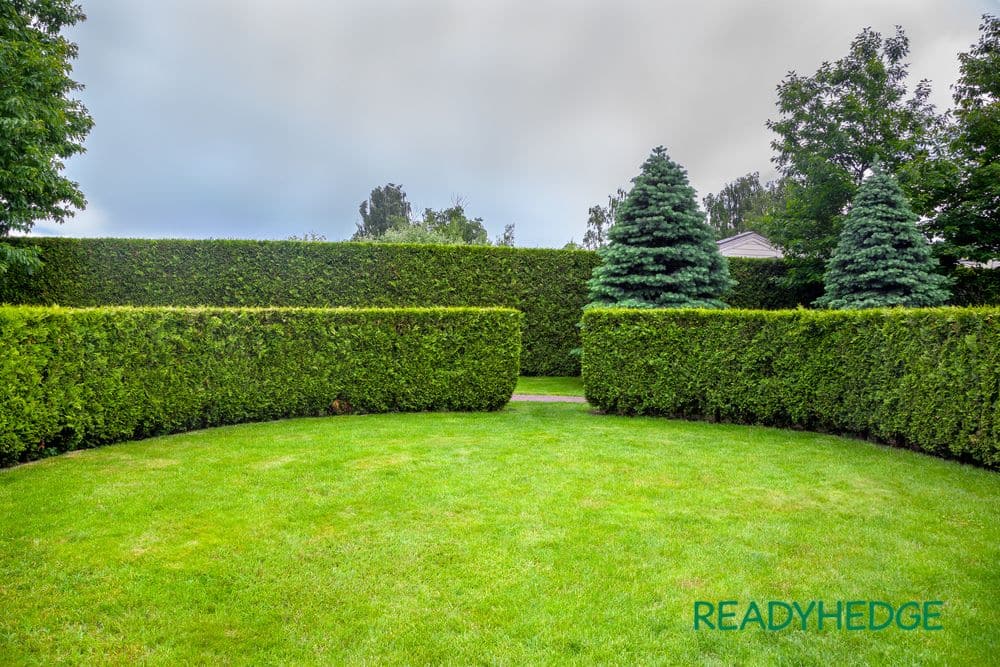
by Simon Williamson | Jul 8, 2023 | News
When it comes to enhancing the beauty and functionality of our outdoor spaces, hedges serve as a perfect solution. Not only do they offer privacy and security, but they also add a touch of natural elegance to any landscape. However, a common question in gardening circles is, “Can you plant a hedge in summer?” Traditionally, most hedging plants have been recommended in spring and autumn. Still, recent gardening advancements have also made it possible to plant a hedge during the warmer months. This article will explore the pros and cons of planting a hedge in summer, the types of hedging plants suitable for this season, and essential tips for ensuring successful growth.
Recommended Planting Time for Hedging
Historically, the recommended planting times for hedges have been spring and autumn. These periods offer milder temperatures and more moisture, which promote better root establishment and overall growth. In contrast, summer’s hot and dry conditions can pose challenges for newly planted hedges. However, planting a hedge in summer can still yield successful results with proper care and attention.
Can You Plant a Hedge in Summer?
Yes, you can plant a hedge in summer. While spring and autumn are traditionally recommended planting times, advancements in gardening practices have made it possible to plant hedging plants during the warmer months. Choose suitable varieties like evergreen or deciduous plants, water them adequately, prepare the site properly, and provide protection from extreme conditions. Although it may not result in an instant hedge, you can establish a thriving hedge with care and patience in the summer.
Types of Hedging Plants Suitable for Summer Planting
The success of planting a hedge in summer largely depends on the hedging plants chosen. Certain varieties are better equipped to withstand harsh conditions and adapt quickly to their new environment. Here are some examples of suitable hedging plants for summer planting:
Evergreen Hedging
Evergreen hedging plants maintain their foliage throughout the year, making them ideal for creating privacy screens and year-round beauty. Varieties such as Boxwood, Privet, and Laurel are popular choices for summer planting. These plants often come as pot-grown hedging, allowing more flexibility in planting times.
Deciduous Hedges
Deciduous hedges shed their leaves during the winter, and planting them in summer provides ample time to establish their root system before facing colder temperatures. Hedging plants like Beech, Hornbeam, and Hawthorn fall under this category and are commonly available as bare root hedging or root-balled plants.
Advantages of Planting a Hedge in Summer
While the traditional planting times are still preferable, summer planting has its benefits, which makes it a viable option for gardeners:
Instant Hedge Formation
One of the significant advantages of planting a hedge in summer is that the warm weather encourages rapid growth. With the right conditions and care, you can witness an instant hedge forming before the end of the season.
Availability of Pot-Grown Plants
Many hedging plants are now available as pot-grown plants, which can be planted at any time of the year. These potted plants have a well-developed root system, making them more adaptable to changing weather conditions.
Tips for Successful Summer Hedge Planting
Real tips always work great for plant health. But what are the tips for summer? To ensure the success of your hedge planted in summer, follow these essential tips:
Choose the Right Time of the Year
While summer planting is possible, it is best to avoid planting during the peak of summer when temperatures are scorching. Opt for early summer or late summer when temperatures are relatively milder.
Prepare the Soil Properly
Before planting, ensure that the site is well-prepared with fertile soil. Incorporate organic matter to improve the soil’s structure and water retention capacity.
Water the Plants Adequately
Watering is critical for the survival of newly planted hedging plants in summer. Be diligent in watering the plants during dry spells, ensuring the top of the root ball is moist. A regular watering schedule is essential until the root system becomes established.
Mulch and Protect
Applying a layer of organic mulch around the base of the plants helps retain moisture, suppresses weeds, and regulates soil temperature. Additionally, use shade cloth or windbreaks to protect the young plants from excessive heat and wind.
Final Thought
Although traditionally, spring and autumn have been favoured for planting hedges, planting a hedge in summer is possible. You can achieve successful results by selecting suitable hedging plants, providing proper care, and following essential guidelines. Whether you opt for evergreen or deciduous varieties, the key lies in maintaining adequate moisture levels and protecting the young plants from extreme weather conditions. With these considerations in mind, you can create a stunning hedge that enhances the aesthetics and functionality of your outdoor space, regardless of the time of the year.
Frequently Asked Questions (FAQ)
Can I plant any hedges in summer?
While it is possible to plant hedges in summer, certain hedging plants are more suitable for this season. Evergreen hedges, such as Boxwood, Privet, Laurel, and deciduous hedges, like Beech, Hornbeam, and Hawthorn, are commonly planted during summer.
Is it more challenging to establish a hedge planted in summer?
Planting a hedge in summer does present some challenges due to the hotter and drier conditions. However, with proper care, including regular watering, soil preparation, and mulching, you can overcome these challenges and help the plants establish a strong root system.
Should I choose pot-grown hedging plants or bare-root plants for summer planting?
Both pot-grown and bare-root plants can be suitable for summer planting, depending on the availability and specific requirements of the chosen hedging plant. Pot-grown plants generally have a more established root system and can be planted at any time of the year, while bare-root plants are often more cost-effective and readily available during the dormant season.
How often should I water my newly planted hedge during summer?
Proper watering is crucial for the survival and establishment of a hedge planted in summer. Water the plants thoroughly immediately after planting, and then maintain a regular watering schedule, especially during dry spells. Ensure that the top of the root ball remains moist, but avoid overwatering, as it can lead to root rot.
Can I create an instant hedge by planting in summer?
Planting a hedge in summer can promote rapid growth, but it is important to note that it may not result in an instant hedge within a short period. While the warm weather encourages growth, it still takes time for the plants to establish a strong root system and reach their desired height and density.
Is it advisable to plant a hedge in the middle of summer?
While it is generally recommended to avoid planting in the peak of summer when temperatures are high, planting in early summer or late summer can provide more favourable conditions for successful establishment. The milder temperatures during these periods can reduce stress on the newly planted hedge.
How long does it take for a summer-planted hedge to grow fully?
The time it takes for a hedge to reach its full growth potential depends on various factors, including the type of hedging plant, growing conditions, and care provided. Generally, the hedge may take several years to reach its desired height and density, regardless of whether it was planted in summer or during other seasons.
Can I trim or prune my newly planted hedge in summer?
It is generally recommended to avoid pruning or trimming newly planted hedges during the first year. Allow the plants to focus on establishing their root system and growing. Once the hedge has become established, typically after the first growing season, you can begin shaping and pruning it as desired.
Can I plant a hedge in summer in a hot and arid climate?
If you live in a hot and arid climate, planting a hedge in summer may be more challenging due to the extreme conditions. However, with careful selection of drought-tolerant hedging plants and implementation of proper watering techniques and shading, it is still possible to establish a hedge successfully.
Are there any specific care requirements for a hedge planted in summer?
In addition to regular watering, a hedge planted in summer may benefit from additional care measures such as applying organic mulch, protecting the plants from excessive heat and wind, and monitoring for pests and diseases. Regular inspection and maintenance will help ensure better health of the hedges.
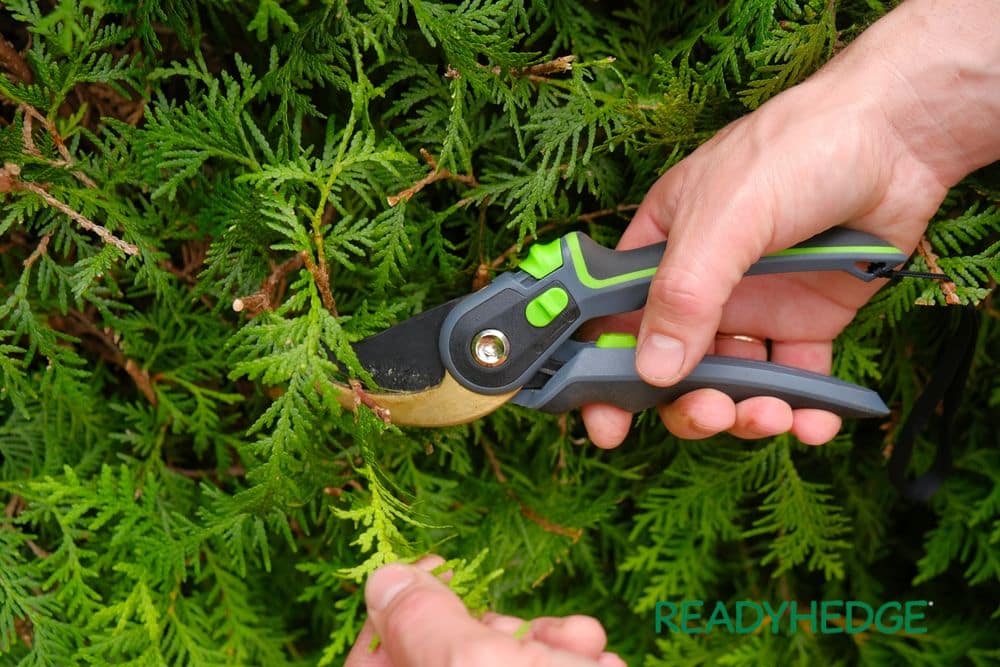
by Simon Williamson | Jul 8, 2023 | News
With the arrival of summer’s warm weather, it’s the perfect opportunity to enhance our outdoor living spaces. An excellent starting point is to enhance the natural charm of your garden, and hedge trimming is a valuable technique to achieve this. Mastering the art of pruning during the summertime may seem daunting at first, but fear not! Our comprehensive guide will demonstrate just how effortless it can be with the essential knowledge of how to hedge trimming in summer. Within these tips, you’ll discover everything necessary to embark on your quest of unveiling your garden’s magnificence through expert hedge trimming.
Timing is Key: The Perfect Time of Year for Hedge Trimming
Trimming your hedge during the summer season can work wonders for its overall health and appearance. Early summer, after the spring growth spurt, is an ideal time to start cutting the hedge. This timing allows for the removal of any damaged or dead branches while encouraging fresh, vibrant growth for the rest of the season.
Informal Hedging: Embrace the Beauty of Natural Shape
One of the best practices for hedge trimming in summer is maintaining a natural shape. This involves working with the hedge’s existing contour and allowing it to retain its authenticity. Hand-held shears are perfect for informal hedging, as they offer precision and allow you to sculpt your hedge with care.
Tools for the Job: Mastering the Art of Hedge Trimming
To achieve pristine results, invest in high-quality tools designed for hedge trimming. Hand-held shears are excellent for small hedges or touch-ups. For larger hedges, a hedge trimmer is a time-saving and efficient option. Consider the size and type of your hedge before choosing the right tool for the job.
Taming the Giants: Conquering Tall Hedges
Trimming tall hedges can be a daunting task, but with the right techniques, it becomes a breeze. Always use a stable ladder or an extendable tool when working on tall hedges. Start by trimming the side of the hedge, carefully following its natural shape. Once the sides are complete, trim the top of the hedge, ensuring a uniform height.
Tips for Pruning Flowering Hedges
Flowering hedges add a touch of elegance to any garden, but pruning them requires a delicate touch. To avoid sacrificing the blooms, prune these hedges immediately after they finish flowering. This practice ensures you don’t inadvertently remove the buds forming for the next season.
Art of Formal Hedges: Turning Your Garden into a Sculpture
Formal hedges require precise and well-defined shapes to create a sense of order and elegance in your garden. A hedge trimmer is the tool of choice for these hedges, as it allows for straight lines and smooth edges. Be patient and take your time, as perfection in formal hedging is an art in itself.
The Top Tip for Hedge Trimming in Summer: Stay Hydrated
Amid the summer heat, it’s essential to take care of yourself as well. Hedge trimming can be physically demanding, so remember to stay hydrated throughout the process. Take breaks, seek shade, and wear appropriate clothing to protect yourself from the sun.
Final Thought
Hedge trimming in summer is an essential aspect of garden maintenance that reaps numerous rewards. By choosing the right time of year, embracing the natural shape of your hedges, and utilizing the appropriate tools, you can turn hedge trimming into an art form. Whether it’s tall hedges, flowering beauties, or formal masterpieces, nurturing your hedges will create a stunning backdrop for your outdoor sanctuary. So, don your gardening gloves, pick up your hedge trimmer or hand-held shears, and embark on a journey to transform your garden into a flourishing haven of beauty.
Frequently Asked Questions (FAQ)
When is the best time to start hedge trimming in summer?
Early summer, after the spring growth spurt, is the ideal time to begin trimming your hedges in summer. This allows for the removal of any damaged or dead branches while promoting healthy growth throughout the season.
Can I trim my hedge in early spring instead of summer?
While early spring is a suitable time for some maintenance tasks, it is generally not recommended for extensive hedge trimming. Trimming hedges in early spring may disrupt the growth cycle and potentially harm the plant. It’s best to wait until summer for more significant trimming.
What tools do I need for hedge trimming in summer?
– The tools you’ll need depend on the size and type of your hedges. Hand-held shears are ideal for precise trimming and shaping, while hedge trimmers are more efficient for larger hedges. Other useful tools may include loppers for thicker branches and a stable ladder for tall hedges.
How often should I trim my hedges during the summer?
The frequency of hedge trimming depends on the growth rate of your particular hedge. As a general guideline, trimming every 4-6 weeks during the active growth period in summer should help maintain a neat appearance. However, it’s important to monitor your hedges and trim them as needed to prevent excessive growth.
Can I trim flowering hedges in summer?
It’s generally best to trim flowering hedges immediately after they finish blooming. This timing allows the hedge to set new buds for the following season while still maintaining its beauty. Trimming too late in summer may result in cutting off the developing buds and reducing next year’s blooms.
Are there any safety precautions to consider while hedge trimming?
Safety should always be a priority when working with tools and hedges. Wear appropriate protective gear, such as gloves and safety glasses, to prevent injuries. Ensure that the tools you use are in good working condition, and follow the manufacturer’s instructions. Be cautious when using ladders and always maintain stability and balance.
Can I shape my hedges into different forms, like animals or geometric shapes?
While it is possible to create more intricate shapes with hedges, it requires advanced skills and regular maintenance. Geometric shapes and topiaries often require extensive pruning and shaping. It’s advisable to consult a professional or a skilled gardener if you’re interested in creating elaborate designs with your hedges.
Remember, hedge trimming in summer is an ongoing process that requires care and attention. By following the appropriate techniques, using the right tools, and considering the specific needs of your hedges, you can achieve stunning results and enjoy a beautiful, well-maintained garden all season long.





















